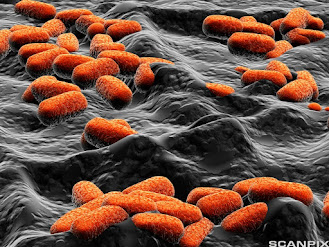Viruses vs. Bacteria: Key Differences
Cellular Structure:
Bacteria: Bacteria are single-celled organisms and are considered to be prokaryotes. They have a simple cellular structure with a cell membrane and cell wall but lack a true nucleus or membrane-bound organelles.
Viruses: Viruses, on the other hand, are not cells. They are acellular entities that consist of genetic material (either DNA or RNA) surrounded by a protein coat called a capsid. Some viruses may also have an outer envelope derived from the host cell's membrane.
Living or Non-Living:
Bacteria: Bacteria are living organisms as they can carry out all the basic processes of life such as metabolism, growth, and reproduction on their own.
Viruses: Viruses are non-living entities because they cannot carry out metabolic processes or reproduce on their own. They can only replicate and multiply inside a host cell by hijacking the host's cellular machinery.
Reproduction:
Bacteria: Bacteria reproduce through binary fission, a process in which a single bacterium divides into two identical daughter cells.
Viruses: Viruses do not reproduce on their own. Instead, they must infect a host cell and take over the host's cellular machinery to replicate and produce new virus particles.
Treatment:
Bacteria: Bacterial infections can often be treated with antibiotics, which are substances that target and kill bacteria.
Viruses: Viral infections cannot be treated with antibiotics since viruses are not susceptible to these drugs. Antiviral medications are used to manage certain viral infections, but many viral infections are self-limiting, and the body's immune system is the primary defense.
Size:
Bacteria: Bacteria are typically larger than viruses and can be seen under a standard light microscope.
Viruses: Viruses are much smaller than bacteria and can only be observed using an electron microscope.
Host Specificity:
Bacteria: Bacteria can infect a wide range of hosts, including humans, animals, plants, and other microorganisms.
Viruses: Viruses are highly host-specific. Each virus can only infect certain types of cells in specific hosts, based on the interaction between viral surface proteins and host cell receptors.
In summary, while both viruses and bacteria are microorganisms, they have distinct differences in their cellular structure, life cycle, ability to reproduce, treatment options, and host specificity. Understanding these differences is essential for developing appropriate strategies to combat infections caused by either bacteria or viruses.

Comments
Post a Comment